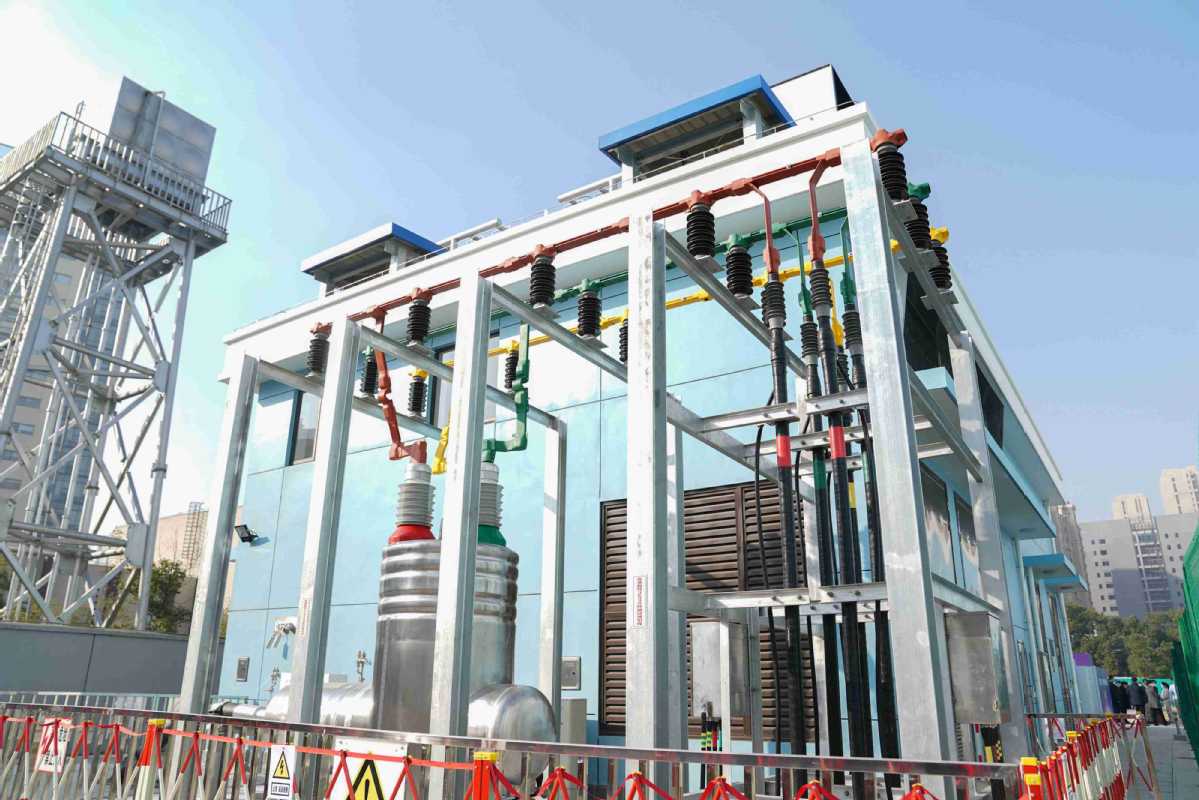Shanghai opens superconducting line
By ZHENG XIN | China Daily | Updated: 2021-12-23 08:53

The world's first 35 kilovolt superconducting power cable was put into operation in Shanghai on Wednesday, making China among the global leaders in superconducting transmission applications, said its operator, the Shanghai branch of State Grid Corp of China.
The high-capacity superconducting power line, which is so far the world's longest superconducting cable transmission project with the largest transmission capacity, marks a major breakthrough in core technologies of China's construction of a new power system, according to State Grid Shanghai Municipal Electrical Power Co.
Installed in the commercial area of Xuhui district, the 1.2-kilometer cable connects two 220 kV substations with a designed current capacity of 2,200 amps. This is also the first superconducting transmission project built by the centrally administered State Grid in the country.
According to State Grid Corp of China, the nation's largest power provider by generating capacity, the superconducting cables-one of the most revolutionary cutting-edge technologies in the power sector-represent an innovative power transfer technology that has the potential to offer numerous benefits.
According to Xie Wei, chief engineer at State Grid Shanghai Municipal Electrical Power Co, the transmission capacity of superconducting cables is much greater than that for conventional cables, but with much less transmission loss. It is also very suitable for power supply in high-load density areas, providing a new solution to the problem of power supply in high-load-density areas of megacities.
One 35 kV superconducting cable transmission line can transmit the same amount of power as a traditional 220 kV power line and saves 70 percent of underground pipe gallery space, Xie said.
The transmission efficiency of the high-capacity superconducting power lines can provide reliable and stable power to megacity urban centers, he added.
Gan Zizhao, an academician from the Chinese Academy of Engineering, said superconducting cables have always been an important way to solve issues of power supply to superlarge cities amid efforts to push forward power upgrade and transformation in the country.
With a temperature of -196 C, which is the temperature range required for liquid nitrogen liquefaction, the technology can greatly improve losses in power transmission due to a resistance of zero, said the company.
The low-temperature superconducting cable project is one of the results of the strategic cooperation between State Grid and the Shanghai Municipal Government in the fields of science and technology.
- Superconducting cable operational in Shanghai
- China achieves quantum computational advantage in two mainstream technical routes
- New China-made superconducting cable operational in Shenzhen
- China advances industrial application of quantum technology
- Beijing to accelerate digital technology innovation
























